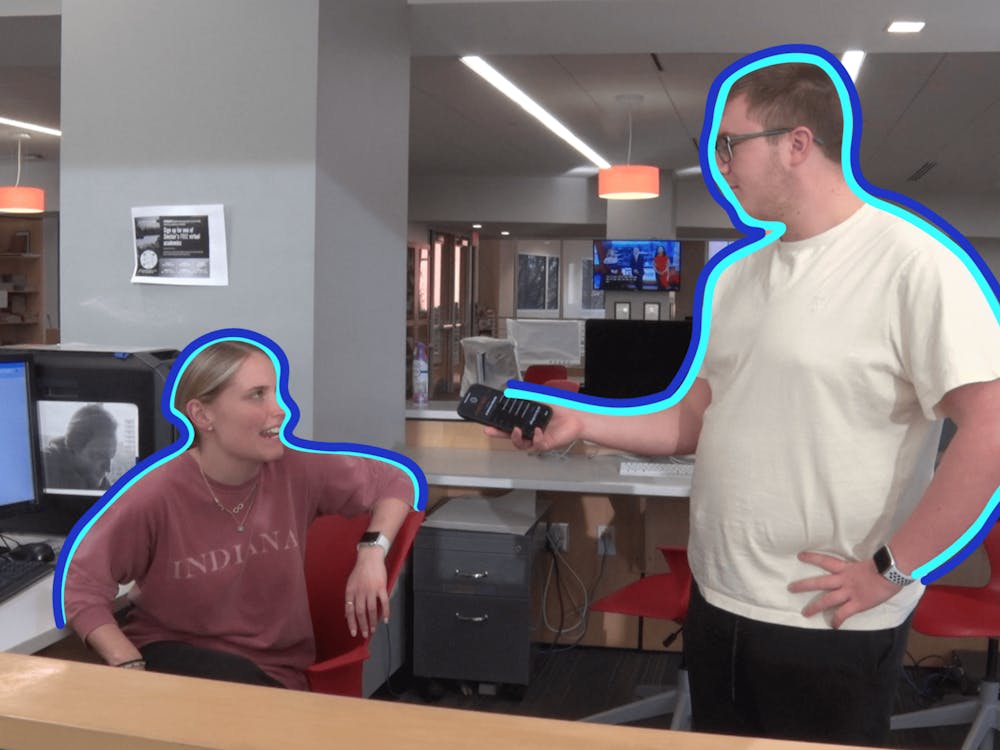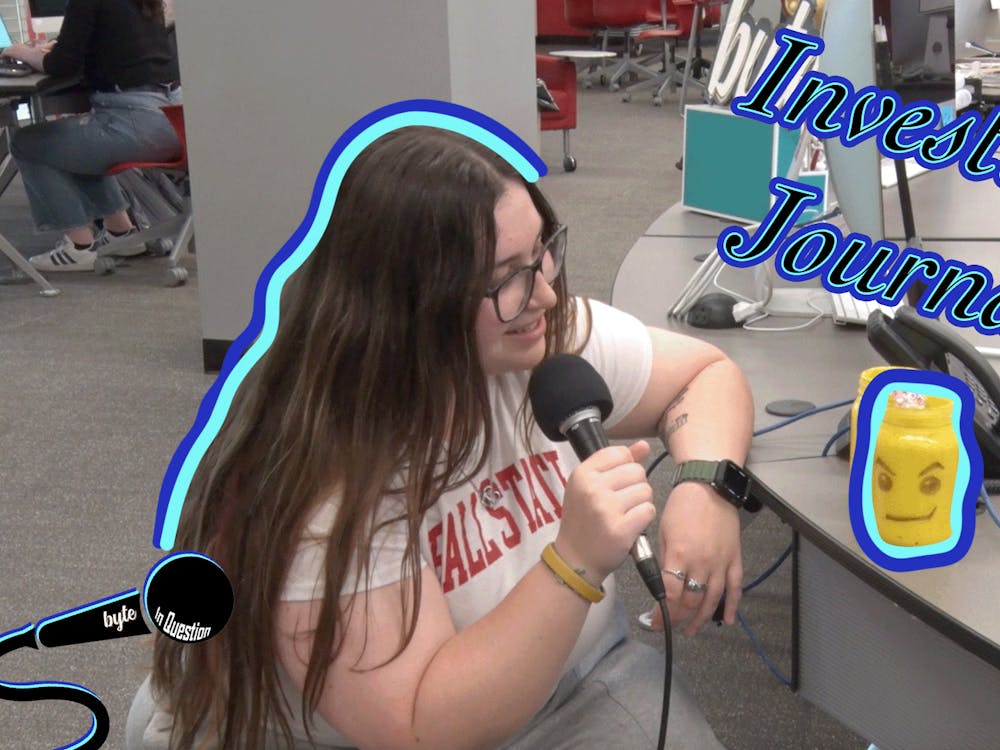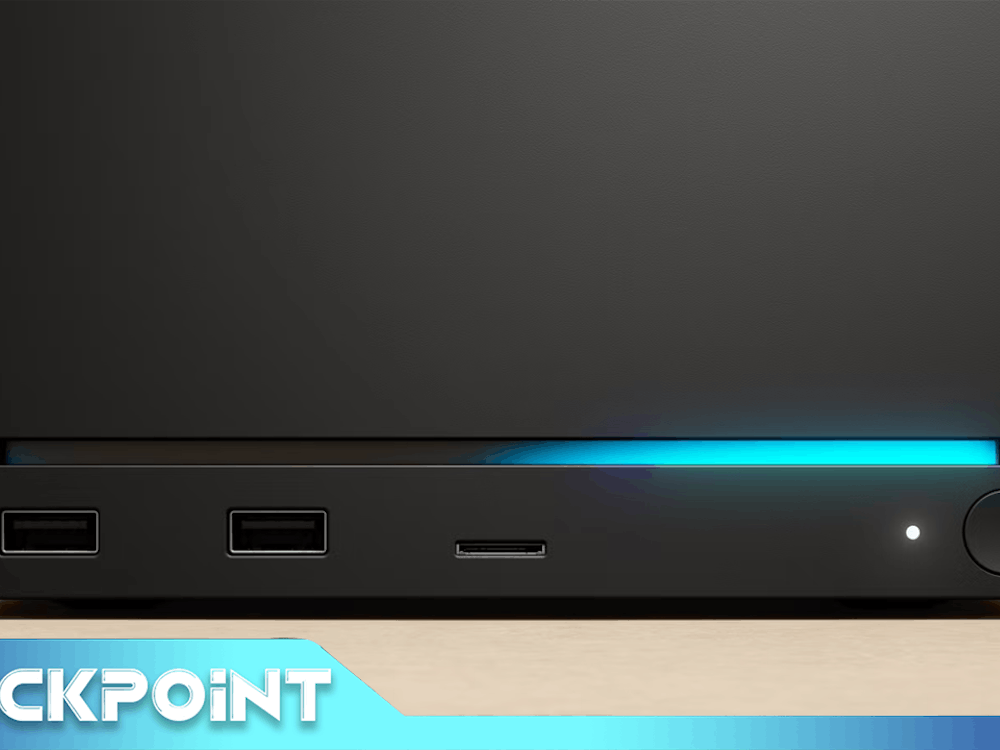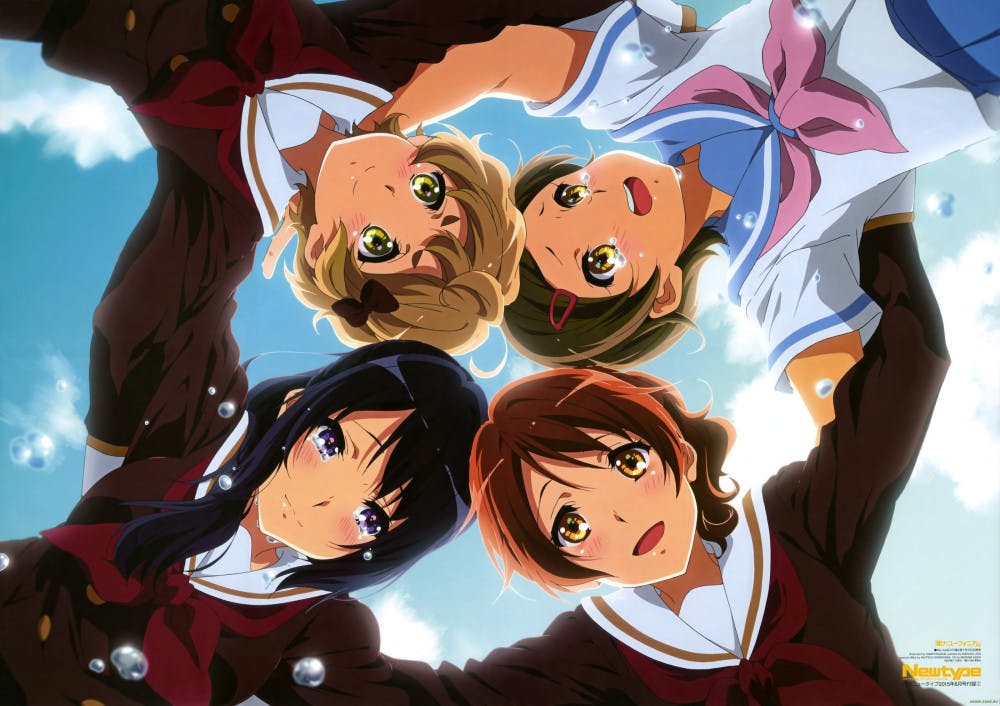by Courtney Tuchman The first season of Hibike! Euphonium, or Sound! Euphonium in English, is one of the best anime of 2015. This slice-of-life series about a high school concert band is daring, coupled with beautiful animation, and a wonderful score to match. The ending, however, leaves much to be desired. Spoiler alert in case you haven’t seen the first season: the orchestra scores the chance to compete in nationals. Hibike! Euphonium 2 was announced shortly after the first season’s end and is meant to tie up some of the loose ends season one left behind. Kyoto Animation, the studio behind Hibike!, has often had a rocky history with sequel seasons (see any Kyoto Ani sequel besides Clannad After Story). Thus, Hibike! Euphonium 2 steps onto the scene with quite the stigma to overcome.
The story doesn’t hit all the right notes
... she’s the same person as she was at the beginning of season two.One of the things the first season of Hibike! Euphonium accomplishes is perfectly balancing the drama with the music. The protagonist, Kumiko Oumae, starts as a freshman at Kitauji High School and only reluctantly joins the concert band after her friends pressure her into it. Throughout the season Kumiko experiences interpersonal commotions between her bandmates, denies a few dates, and also combats early morning practices and the pressure of mastering the euphonium. As far as season two is concerned, the drama is frustratingly more important than the music. Oddly most of the drama isn’t even centered around Kumiko. Problems happen to her family or the other orchestra members. It seems as if Kumiko’s just there to react in a classic anime, open-mouthed style to the things that are out of her control. She watches the problems unfold for a shy oboe player, Mizore Yoroizuka. That ends. Then Kumiko witnesses the developing, abusive mother-daughter relationship of a fellow euphonium player, Asuka Tanaka. Then that ends. Next, Kumiko’s sister drops out of college. That ends quickly too. The story arcs follow each other, step after step, with nothing ever really happening to Kumiko herself. Kumiko certainly becomes invested in each of these stories, but she never really faces more challenges of her own. She gets to experience a few new emotions when her sister is concerned, but besides that she’s the same person as she was at the beginning of season two. The journey would be more interesting if the other characters had been built up a bit more in the previous season, but aside from Asuka hardly any of them were granted a line. Therefore it’s a bit of a stretch to become emotionally invested in these people.
 Another part of the story that makes no sense this season is how the upperclassmen hide the concert band’s past from the freshmen. In season one, a major part of the story is focused on Kumiko doing some detective work into what happened the year before she joined the orchestra, since there are very few second-year students. We eventually find out they all quit, but we never really find out why. Thankfully season two answers the question, but it takes way too long to find the answer. I would imagine any normal group of teenagers in real life would be glad to spill all of the poor decisions that struck them the previous year so history wouldn’t repeat itself. Hibike! Euphonium 2 thinks the secret is way too important to reveal, and it spends too much of its runtime on upperclassmen avoiding Kumiko.
Despite every flaw the story boasts, Hibike! Euphonium 2 is still worth the watch if you’ve seen the first season since it does a pleasant job of concluding the story. When the show decides to focus on the old side characters, it becomes enjoyable again. Additionally the band performances are always a pleasure. There aren’t as many of them this time around compared to last season, but the few uninterrupted, quiet minutes of stylized animation and band music are a refreshing luxury whenever they grace the screen.
Another part of the story that makes no sense this season is how the upperclassmen hide the concert band’s past from the freshmen. In season one, a major part of the story is focused on Kumiko doing some detective work into what happened the year before she joined the orchestra, since there are very few second-year students. We eventually find out they all quit, but we never really find out why. Thankfully season two answers the question, but it takes way too long to find the answer. I would imagine any normal group of teenagers in real life would be glad to spill all of the poor decisions that struck them the previous year so history wouldn’t repeat itself. Hibike! Euphonium 2 thinks the secret is way too important to reveal, and it spends too much of its runtime on upperclassmen avoiding Kumiko.
Despite every flaw the story boasts, Hibike! Euphonium 2 is still worth the watch if you’ve seen the first season since it does a pleasant job of concluding the story. When the show decides to focus on the old side characters, it becomes enjoyable again. Additionally the band performances are always a pleasure. There aren’t as many of them this time around compared to last season, but the few uninterrupted, quiet minutes of stylized animation and band music are a refreshing luxury whenever they grace the screen.
The characters don’t measure up
...even poor Shuichi gets the boot. He has only one or two scenes with Kumiko this entire season, and they’re supposed to be longtime childhood friends.The cast of characters is a rather large one in Hibike! Euphonium, seeing as it focuses on a massive, high school orchestra with three different conductors. Although a quick glance at season two might leave you wondering: where did all of the characters from the first season go? Haruki Katou and Sapphire Kawashima, a beginner saxophone player and a seasoned contrabass, respectively, are nearly demoted to background characters, which is a shame. Those two girls were a pair of memorable friends and a great support group to Kumiko in the first season. Now they’ve been reduced to one-liners and the sporadic supportive message for Kumiko. They are still heavily featured in the opening and ending, but they often get more screen-time there than in the actual show. In season one those two girls were allowed to develop their own drama with Haruki crushing on Shuichi Tsukamoto, a trombone player, being one of the turning points in the series. Following the path of the girls, even poor Shuichi gets the boot. He has only one or two scenes with Kumiko this entire season, and they’re supposed to be longtime childhood friends. All three of these characters had stories to tell, yet Hibike! Euphonium 2 threw them out the window to make room for the ever-so-important tragedies surrounding the friends of Kumiko’s friends. I didn’t leave season one craving more information about Asuka’s home life. In fact, I left season one waiting for some further development of the lesbian relationship between Kumiko and the cold trumpet-player, Reina Kousaka. Their romance is only teased in the first season and never confirmed. Apparently the relationship is headed toward non-existence since the creators of Hibike! Euphonium 2 lost their consistency. The plotline is completely abandoned. You’re trying to tell me that this scene from season one is just implying that they are really good friends? Unacceptable. It’s practically impossible to interpret their relationship in any other way, and yet those at Kyoto Animation changed directions once it was time to add 13 more episodes of elaboration.
 Cringingly, Reina spends the entire season crushing on the band’s director, Taki-sensei. This creative decision could be forgivable; perhaps if Reina had mentioned her crush during a previous instance, except it wasn’t declared a single time until season two. Reina is supposed to be the independent musician who decides to be in concert band to become special. Being a trumpeter is what she wants to do for the rest of her life. Now all she wants is to confess to her teacher and instantly loathes anyone who gets in her way. For some reason, the anime doesn’t pass this off as incredibly creepy and weird, either—which it most definitely is. Granted, we do eventually learn why Reina has a crush on the teacher, but the reasoning causes it to become even more nonsensical that these feelings were never brought up during the first season.
Hibike! Euphonium is based off of a light-novel, which is a Japanese-exclusive type of book that targets similar demographics as a YA novel would, so perhaps the creators felt like they couldn’t continue with the Kumiko-Reina relationship in order to stay faithful as an adaptation. Or their well-developed relationship was only intended to be fan service from the start and nothing more. Nevertheless, the abandonment of this plotline doesn’t excuse anything.
Cringingly, Reina spends the entire season crushing on the band’s director, Taki-sensei. This creative decision could be forgivable; perhaps if Reina had mentioned her crush during a previous instance, except it wasn’t declared a single time until season two. Reina is supposed to be the independent musician who decides to be in concert band to become special. Being a trumpeter is what she wants to do for the rest of her life. Now all she wants is to confess to her teacher and instantly loathes anyone who gets in her way. For some reason, the anime doesn’t pass this off as incredibly creepy and weird, either—which it most definitely is. Granted, we do eventually learn why Reina has a crush on the teacher, but the reasoning causes it to become even more nonsensical that these feelings were never brought up during the first season.
Hibike! Euphonium is based off of a light-novel, which is a Japanese-exclusive type of book that targets similar demographics as a YA novel would, so perhaps the creators felt like they couldn’t continue with the Kumiko-Reina relationship in order to stay faithful as an adaptation. Or their well-developed relationship was only intended to be fan service from the start and nothing more. Nevertheless, the abandonment of this plotline doesn’t excuse anything.
Animation is this show’s forte
If there’s one thing Hibike! Euphonium 2 has going for it, it’s the animation. It’s simply an incredible spectacle to behold. The animation never stops being beautiful. Every second, every single frame, is just about flawless. The attention to miniscule detail is astounding. The small motions other studios wouldn’t bother touching are where the animation loves to shine. It demonstrates tiny, unspoken traits for each of the characters or adds to the show’s world building. Walk styles, head tips, hair movement—they all subtly convey thoughts, feelings, and personality. There’s one instance where Taki-sensei is writing something on a chalkboard, and after he takes his hand away, a few chalk particles fall down from the print. The addition is so microscopic you might actually have to zoom in to catch it. Another lovely tidbit happens during a scene when Kumiko is crying on a train. A man in the background slightly turns his head to look at the weeping girl, then averts his attention after a moment. It’s a small element that absolutely didn’t have to be animated, but a stranger turning to look at a sobbing girl on the train would easily happen in real life. There’s also a moment where Kumiko drinks something hot, and she pulls her sleeves up over her hands so she can comfortably grip the can. These details are so tiny you might not even notice them. But when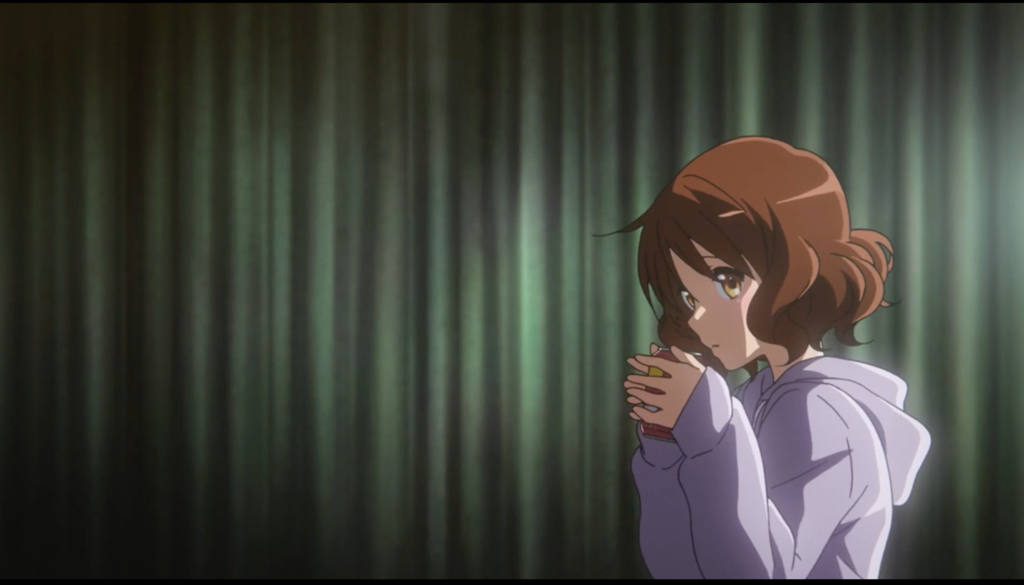 there are so many of them, they add up to be something amazingly large. In the entirety of the Hibike! Euphonium series, there is not one frame in which the animation reaches anything below breathtaking.
there are so many of them, they add up to be something amazingly large. In the entirety of the Hibike! Euphonium series, there is not one frame in which the animation reaches anything below breathtaking.
The voice acting falls flat
At the start of Hibike! Euphonium 2, I found it interesting that the original voice actress of Kumiko was replaced, since there was no apparent reason for her to be taken off the show. The voice acting in season one is par for the course. The switch sticks out too, since the new actress doesn’t try to emulate the tone of the old one. Much to my extreme surprise upon looking it up, the voice actress hadn’t been replaced after all. Kumiko is still played by the same performer; she just sounds like an entirely different person—and not in a good way. She sounds bored. No matter if Kumiko should be happy, upset, embarrassed, or thankful, all you really hear is someone who’s half-asleep. And it’s not like Kumiko is voiced by a teenager who went through puberty in the last year. The actress is 20 years old. The voice acting turns Kumiko into a shell of her former self. That might not be any fault of the actress’ own—maybe she realized how much more uneventful Kumiko’s life is in this season and adjusted accordingly. But that still doesn’t excuse the slack-jawed, emotionless performance Kumiko’s actress gives each episode.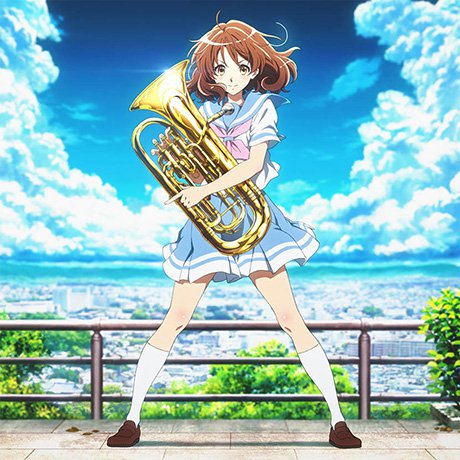 As far as the rest of the anime’s sound goes, there’s no problem. Much of the score is recycled material from the first season. New tracks are still present, and they are just as lovely to hear as the returning songs.
As far as the rest of the anime’s sound goes, there’s no problem. Much of the score is recycled material from the first season. New tracks are still present, and they are just as lovely to hear as the returning songs.




